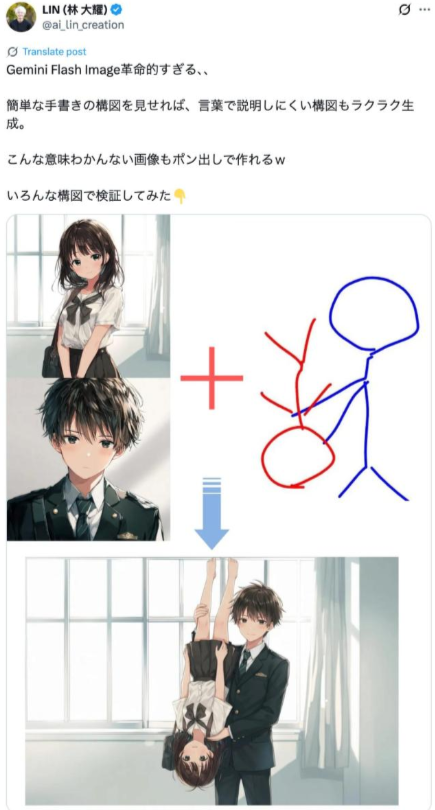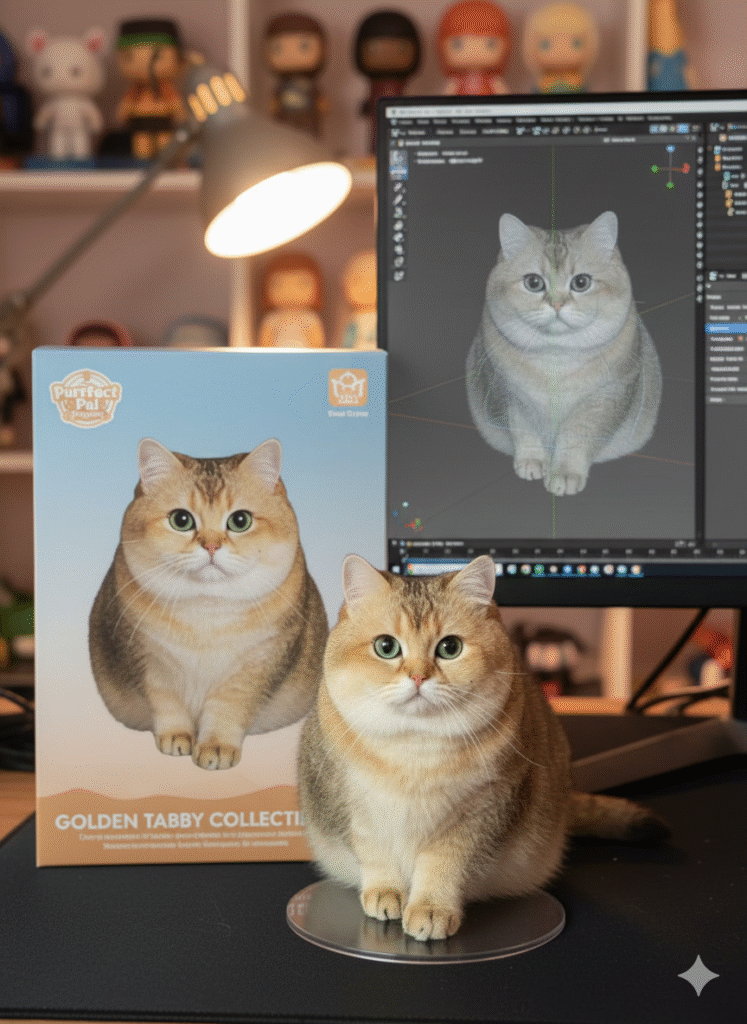What Is Nano Banana?
Nano Banana is the social media nickname for Google’s Gemini 2.5 Flash Image, an advanced AI image editing model. It lets users transform photos with natural language prompts, offering unmatched consistency in character editing and scene preservation. Compared to Flux Kontext, it delivers superior accuracy, making it ideal for creative workflows and professional tools like Photoshop.
Its magic lies in three words: Fast, Precise, Powerful. ⚡
Another good news:You can now try Nano Banana on Global GPT.

If you want to learn more ways to use Nano Banana for free, here it is.
Why Is It Called “Nano Banana”?
The official name is Gemini 2.5 Flash, but the name “Nano Banana” follows Google’s usual naming convention for foundational models: starting with Gemini, followed by a version number, and ending with a designation representing the model’s scale. Originally, the sizes ranged from Ultra, Pro, to Nano. Later, considering response speed and cost, Google introduced Flash—a faster, cheaper option that doesn’t compromise too much on quality.
However, before Gemini 2.5 Flash was officially released, the community had already been calling it Nano Banana. This was because the model, under that name, once topped the image editing category on the LM Arena model leaderboard.
According to Sherron, Product Manager at Google DeepMind,the name “Nano Banana” was actually chosen by chance. “It was born at 2 a.m. The team had to submit a name for an anonymous model leaderboard… and someone at 2 a.m. came up with ‘Nano Banana,’ thinking it probably wouldn’t be associated with Google.”
Thanks to its simplicity, memorability, and the model’s strong capabilities, even after Google released the official name, Nano Banana still holds a notable presence in SEO keywords.
How Popular Is Nano Banana?
Following last week’s announcement, Google revealed just how much of a hit Nano Banana has been for the Gemini app. Officially named Gemini 2.5 Flash Image, the model is widely referred to as Nano Banana, with a banana emoji now appearing in the Gemini prompt bar, the same name in AI Studio, and even a dedicated @NanoBanana social account. On LMArena’s Image Edit leaderboard, it ranks #1 by a 171-point margin.
Since launch, over 200 million images have been generated with Nano Banana, and more than 10 million of these users are new to the Gemini app.
The surge in popularity has also driven app downloads, with Gemini currently #2 in the Productivity category on the App Store and #13 on the top free chart in Google Play.
Nano Banana’s main strengths—maintaining character likeness and consistency, supporting multiple photo uploads, style transfer, and multi-turn prompt editing—have made it a standout tool for image editing worldwide.
Here’s a raw image example of Nano Banana that’s going viral. The character’s pose was perfectly changed using Nano Banana.

Why Nano Banana Went Viral: From Anonymous Debut to Collectible Figure Craze
Nano Banana went viral because Google’s Gemini 2.5 Flash Image made advanced AI photo editing free, simple, and highly effective. Users could easily turn photos into realistic 3D figures with consistent quality. Its popularity spread quickly on social media as both everyday users and influencers shared their creative results, showcasing its ease of use and impressive outputs.
In the past couple of days, logging in anywhere, you’d see feeds flooded with incredibly detailed and realistic figure images generated by Nano Banana. Whether it’s the AI community, the anime circle, or even cycling groups, it feels like everyone suddenly started experimenting with Nano Banana at once.
So, what exactly happened? What made everyone act in such unison?
The model first appeared anonymously on the LMArena platform. It quickly went viral because its raw outputs from Nano Banana were so impressive, sparking countless online guesses about its origin.
(tips:Nano Banana has now been removed from the LMArena platform. If you want to keep using it, I have 5 websites where you can use Nano Banana completely for free.
)
It wasn’t until two days ago that Google finally stepped forward to claim the model, revealing it as Gemini 2.5 Flash Image.
With Nano Banana finally unveiled, users have gone on a frenzy to try it out, and collectible figures generated by Nano Banana in particular have become the hottest trend.

3 Key Features That Made Nano Banana Go Viral
A Good Name May Attract Attention, But Nano Banana’s Success Comes from Its Technical Features
According to David Sherron, Nano Banana has three main strengths:
Highlight 1: Exceptional Understanding – Delivering Results That Match User Expectations
Sherron explains that Nano Banana is built on the Gemini model, which allows it to leverage Gemini’s logic, reasoning, and world knowledge to understand user instructions—not just match keywords.
This is why, when a user requests an “80s style,” Nano Banana can automatically apply the era’s hairstyles, makeup, and clothing—it actually “understands” the cultural context of that decade.
Highlight 2: High Consistency – Enabling Users to Edit Their Own Images
This feature is perhaps the most appealing aspect of Nano Banana.
Sherron revealed that the Gemini team often heard users wanting to edit their own photos. The challenge, especially for portraits, is that generating new content usually makes it difficult to retain original facial features.
Nano Banana addresses this by allowing users to upload their own photos and modify them while the AI “locks” the original facial structure, only changing the elements specified. This breakthrough in character consistency lets users swap backgrounds, adjust poses and expressions, or remove objects—closely aligning with everyday use.
Highlight 3: Lowering the Barrier – Step-by-Step Editing Through Conversation
Nano Banana’s tagline is: “Reshape your photo with a single prompt.” Sherron notes that users don’t need to give a perfect instruction in one go—they can adjust step by step, just like communicating with a creative partner.
For example: “Add a hat, add sunglasses; I want the shirt yellow, no, make it red.” This intuitive interaction allows even users unfamiliar with professional image editing tools to easily create the perfect image they envision.
How to Generate a Realistic Figure Using Nano Banana
If you want to create the trending “realistic figure” using Nano Banana, here’s a step-by-step hands-on guide from Quantum Bit. This method has been tested and proven to generate high-quality, detailed figures that look like real collectible models.

Prompt Example for Nano Banana to Generate a Realistic Figure:
Use the nano-banana model to create a 1/7 scale model, in a realistic style and environment.
Place the figure on a computer desk, using a circular transparent acrylic base without any text.
On the computer screen, display the ZBrush modeling process of the figure.
Next to the computer screen, place a TAMIYA-style toy packaging box printed with the original artwork.
Tips for Best Results:
- Be Specific with Scale and Style: Including details like “1/7 scale” and “realistic style” ensures the figure looks proportionate and lifelike.
- Describe the Environment Clearly: Mention the desk, base, screen, and props so Nano Banana can create a coherent scene around your figure.
- Use Reference Details: Including terms like “ZBrush modeling process” or “TAMIYA-style toy packaging” helps the AI match real-world aesthetics.
- Iterate and Refine: If the first result isn’t perfect, tweak the prompt slightly—adjust lighting, pose, or materials—to get the ideal figure.
By following these steps, Nano Banana can generate a collectible figure that’s not only realistic but also consistent in character and environment. This makes it perfect for showcasing designs, creating promotional content, or even inspiring new handcrafts.

Nano Banana Makes Image Editing as Easy as Talking
Traditional AI image tools often feel like rolling the dice—you want to tweak one detail, and you end up regenerating the entire image. But Nano Banana changes the game with natural language editing.
Want to change the background? Just say: “Turn the background into a cyberpunk-style forest.”
Not happy with the character’s expression? “Make her smile more naturally and add a soft side light.”
Want to get creative? “Merge this person with the cat so they’re interacting on the sofa.”
No more fiddling with layers or complicated tools. Type what you want, and the image updates instantly. With Nano Banana, this isn’t just generation—it’s conversational editing.

Nano Banana Delivers Unmatched Character Consistency
This is a dream come true for creators. With most AI image models, keeping the same character consistent across multiple images is almost impossible—faces change, styles drift, and continuity breaks.
Nano Banana fixes that. It can lock in a character’s features across dozens of variations. Dress the same character in 10 different outfits, place them in 5 different environments—and their face, hairstyle, and expressions remain consistent every time.
For comic artists, storytellers, and brand IP creators, Nano Banana is nothing short of revolutionary.

I have even more crazy ways to use Nano Banana.such as AI face swapping, outfit changes, cosplay ,3D AI Figurine,and altering a character’s pose.It can even be used to create product design images and Restore Old Photos.
People worldwide have even started businesses using Nano Banana to create perfect passport and ID photos.
How Fast Is Nano Banana? Just 1–2 Seconds ⚡
The “Flash” in Gemini 2.5 Flash Image isn’t just for show. Nano Banana delivers results in 1–2 seconds, so your creative flow never gets interrupted.
No more waiting minutes for inspiration to materialize—Nano Banana keeps up with your creativity and ensures ideas flow seamlessly.
Ready to Try Nano Banana Yourself?
With Nano Banana, editing images feels as easy as having a conversation. No more complicated tools, no more waiting—just instant creativity at your command.
🚀 Experience Nano Banana today on Global GPT and explore not only AI image editing, but also AI Chat, Video, and 100+ powerful AI tools—all in one platform.
Frequently Asked Questions about nano banana(FAQ)
Q: How does Nano Banana compare to Midjourney and Stable Diffusion?
A: Each has its strengths. Midjourney and Stable Diffusion excel in aesthetics and stylized image generation, but their post-editing capabilities are limited. Nano Banana’s key advantages are its powerful editing features and character consistency. It’s more like an intelligent photo editor than a pure painting tool.
Q: Is there a free version of Nano Banana?
Yes. You can use Nano Banana for free through Google’s official platform like AI Studio. This lets you experience its powerful editing and lightning-fast image generation before deciding whether to upgrade to a subscription.